|
Our July Newsletter is now live, we invite you to join us for our Full Moon ceremony on the 21st of July and for our Lughnasa ceremony on the 5th of August. We also highlight our new membership ID cards and our upcoming Mystery School Autumn Saturday Classes. Read the full newsletter here or join our email list to have it delivered straight to your inbox.
0 Comments
This Full Moon is on the 21st of July rising at 22.45 as seen if standing at Brú na Boinne. This rising point on the horizon is where the Winter Solstice Sun rises to send its sunbeam into the Temple to activate the energy grid. With the Full Moon rising at the same horizon location it will reflect Sun light up the passage way and into the central chamber of the great Temple at the bend of the Boyne. This is a Full Moon alignment activation - a rare event! Details in the two graphics on this blog post are your map to being connected to these events. The solar activation is done at Sunrise and the Lunar activation is done at Full Moon rise from the exact same location on the horizon.  The Solar activation at Mid-Winter lasts for 17 minutes and the Full Moon activation for the 21/07/24 lasts for up to 14 minutes. My guess is that this activation alignment was well known to our ancestors and that the Moon light may hit the centre of the main chamber for up to five minutes. Will it be a white light, a reflection of light from the Sun as it dips below the western horizon? What a fantastic event! There are other activation alignments of this great Temple and more information is shared in our mystery school in the upcoming Autumn Saturday Classes.
Lughnasa means "the games of Lugh" (pronounced as Lou) and refers to the assembly for games at the time of the first of three harvests. The month of August is called Lughnasadh as Gaeilge and it marks the first harvest of Summer. This was a specifically Irish holiday and many of the other Celtic cultures also celebrate an August festival known by a range of names. As Beltine marks the start of summer - Lughnasa marks the end of summer. History associates Lughnasa with the Lugh, a leading Celtic deity and hero. As it is the end of summer and the time of the first main harvest - everyone reckoned it to be a great time to assemble for the games with a major feast, and for some it was the start of a trial marriage.
We time Lughansa by the setting of the star called Regulus in Leo which is seen by us as the setting of the star Shallinis in the sign of Lugh. Four years ago - Con renamed the star group Leo after Lugh and the bright star Regulus. He renamed Regulus as Shalinnis (aka Fáil Inis), hound of Lugh. Shalinnis is invincible in battle, vomited quantities of gold and silver as needed and mead or wine came out of streams he washed in - a hound worthy of the great war hero we know as Lugh. The big thing about Lughnasa this year is its double occultation. In the graphic you can see Venus and the Dark Moon with Shallinis in the far distance behind them. When the Sun has set 3 or 4 degrees below the horizon the planet Venus will suddenly brighten as it reflects Sunlight and because Shallinis is behind it, any light from Shallinis will be hidden by the brightness of Venus. The Dark Moon is not reflecting any sunlight but it contributes to the occultation of Shallinis. So if you are standing in the right place at the right time looking in the right direction and waiting to see the bright star Regulus/Shallinis and the Sun has just set below the horizon its the planet Venus that you can see. It may look like the bright star of Lughnasa has got really really big but the light from the star will be hidden inside the light from Venus. We wonder if this is part of the legend that said the bright star Lugh was a second Sun...this is the correct timing for Lughnasa with the Sun set and the bright star Shallinis/Regulus briefly makes an appearance before it too sets below the horizon and its happening on the 5th of August at 21:33 Irish time. Our newsletter has just been sent by email to our members and friends. In this moonth's newsletter we highlight that the Summer Solstice and the Full Moon are happening on the same day this year! And that our plans for our Full Moon ceremonies on Tara and Vienna have changed this moonth. You can read the full newsletter at this link.
This years Summer Solstice is on Friday the 21st of June but its a special one as it is accompanied by the Full Moon rising as far South as it can. The diagram below shows this Major Full Moon Standstill. It might all look and sound very complicated but try to understand it this way - when the Sun shines into Newgrange at winter time it is because the Sun is at its most southerly rising point on the eastern horizon, well on this Summer Solstice the Full Moon will rise even further South than the rising Sun can ever reach. A unique event creating a 19 year cycle of the Sun and Moon. This completes the MOON'S STANDSTILL CYCLE that we honoured on Tara on the Solstice Full Moon of 2005. A huge gathering joined us and worked with us in a ceremony to honour the Fullness of the Moon on the shortest night.
Bear in mind that our ancestors honored the cycle of the Sun and Moon and Stars and that this 19 year cycle would have been very well known to them, the ancestors would have honored this special event and we will too. There's a change to the usual plans for our Full Moon ceremonies on Tara and in Vienna, please email Ard Druí Red John or Ard Druí Karl to request an invitation. Here at the Celtic Druid Temple we have a members and friends only high noon gathering at Temple Crom and our usual 8pm gathering to honour the cycles of the Full Moon, please contact us by email if you wish to join us. Our moonthly newsletter is now live. We invite you to join us at our Full Moon ceremony at 8pm on Thursday the 23rd of May. We’ve been celebrating the fullness of the Moon and our connection with the greater cycles of Time for over 20 years now and each ceremony is still unique and enriching for us. More and more people are realising that partaking in regular ceremonies which celebrate our relationships within Nature can be really beneficial to staying grounded throughout the rest of our busy daily lives. And we're fundraising for biodiversity. We are eager to install a pond to support the natural regeneration of biodiversity in the woodland. Our woodland is already bursting with bird song and hosts a visiting herd of deer, families of pine martins and foxes as well as badgers and the occasional otter who visits the lower part of the woodland. Ponds really are secret treasures, for their relatively small size they contribute in a powerful way to the overall health of the locality. Read the full newsletter at this link.
Yesterday we hosted a lovely group from the Slovak Republic. A full day immersed in Temple Crom and its surrounding woodlands. Ard Druí Niamh gave an introduction to the Temple and to our traditions. Two days previous had been enjoyed with Joe Conlon, Keeper of Tlachtga at the sacred site of Tlachtga in Co Meath. Gifts were exchanged and Con and Niamh posed with Renata, the leader and teacher of the group from the Slovak Republic. We are holding traditional wooden drinking vessels from Slovakia. Below is am image of a Slovak lady playing a Fujara, a traditional sheep herders horn. A hand made musical instrument that sounds a bit like 'Pan pipes' but with Pan pipes you'd blow over the end to get the sound but with a Fujara one blows into it. A surprise for us and for Ivana! Ivana is from the Slovak Republic where the first editions of my book were printed for me. She got a copy from us and began the translation / transliteration long before she knew she would be here on a Spiritual Pilgrimage. When Ivana found out she would be visiting us here she was amazed. She brought the book with her 50% translated and I was very happy to sign it for her in OgamNua. What wonderful magical connections are made when people embrace their own Path to awareness. We express our thanks for all the gifts we were given and wish the Pilgrims every blessing for their shared journey. Feedback by email from Ivana-
Last week I spent traveling around Ireland discovering the primordial Celtic Druid Tradition with group of friends from Slovakia. It was an amazing experience, full of beauty in nature as well as in people. Thank you Con Niamh Connor for your welcoming and sharing. Since I've been translating the book of Ogham for the past 7 months, meeting you was a dream come true for me and a great honor. I wish you all the best! In this months newsletter we invite you to our Full Moon celebrations this Tuesday the 23rd of April. We let you know about three new Celtic Fire Magic Saturday Afternoon classes, we are looking for volunteers to help in our woodland and Con shares another two chapters of his book to subscribed members. You can read the full newsletter at this link.
In this moonth's newsletter we highlight our full moon celebrations and let you know that there is a partial eclipse taking place on Monday morning. We have also announced a bonus Saturday class on the 30th of March all about meditating, understanding subtle energy and the how wonderful trees are. New Dates for April and May have also been shared. Read the full newsletter here.
One of the core mysteries of Ireland’s Indigenous Celtic Wisdom Tradition is that it has Three Cauldrons within and Three Realms without. The diagram above shows the development from Beginner to Realised to Wisdom Sharer. See that #1 is where we all start and #3 is completed basic training as an Ard Druí and that #5 is applied or advanced sharing of wisdom. #1 is where we find the “seekers”, those who would walk a path to higher self awareness. The #1’s look all around and mostly see mediocrity, dullness and casual acceptance of the master-slave hierarchy. Seekers want to find a way out of such notions and may begin to look for a Path. They often leave Ireland to join in with other indigenous practices in other lands because they cannot see Ireland’s native traditional ways because these were destroyed by an alien church and imperial control system. Or they stay at home and fall prey to the fantasy bandits with their gaudy glamour claiming connection to our indigenous practices. The common basis for the philosophy of the bandits is a debased version of the Hebrew / Jewish tradition of the Cabbala. This they present as the “Old Religion” and it is but not from Ireland! (See Stopping the 'wiccan burning cult' on the homepage at https://www.celticdruidtemple.com/ for details). The bandits knowledge system and core philosophy's and lineage belongs to the deserts of the middle east and all their efforts to make it ‘Celtic Irish’ by the addition of shamrocks and retold church stories peppered with a “Cúpla Focal” does not hide this fact. Others incorporate parts of the Hindu tradition and many educated seekers look to be ‘Certified Shamans’ with dressings of shamrocks, leprechauns and so on. Alien practices cannot connect seekers to the Irish indigenous Path. It is unlikely that anyone under the age of 30 years is at stage #5 because they could not have gained access to the higher awareness that comes only with sufficient life experience and personal knowledge from which to share. A 30 year old may have lots of experience in specialist areas but would not have sufficient life experience and personal knowledge to share true wisdom on the higher levels. The basic reason for this is that it is only by combining personal knowledge and personal experience that one creates personal wisdom. Reading, studying or even watching videos can help seekers to avoid common mistakes but such mental activities cannot give either personal knowledge or personal experience that lead to higher wisdom. It can be argued that “reading, studying or even watching videos” can give focused mental skills in confined areas and this has much truth in it but it does not lead to the higher consciousness of the Ard Druí sharing wisdom to seekers.
The 15 images shown in the graphic above are made from static images to convey information about progressive stages of personal development. The reality is more like these cauldrons are spinning fast and in chaotic motion in three dimensions all the time. Only the base or cauldron of warming is sitting upright all the time - this cauldron must be filled with living water and organic fresh food on a daily basis, this cauldron must be stirred by physical movement and must be cleansed by regular constant detox / bowel movement. The cauldron of warming needs to be fed the best ingredients, stirred and cleansed on a continuous basis for an extended period before the middle and upper cauldrons have a chance to ‘do their work’. This is the mystery - “you are what you eat, say and do” - choose wisely and enjoy every step of your Path. All part of the Saturday Class teachings at our Indigenous Wisdom Tradition - see https://www.celticdruidtemple.com/saturdayclasses.html |
Archives
July 2024
Categories
All
|
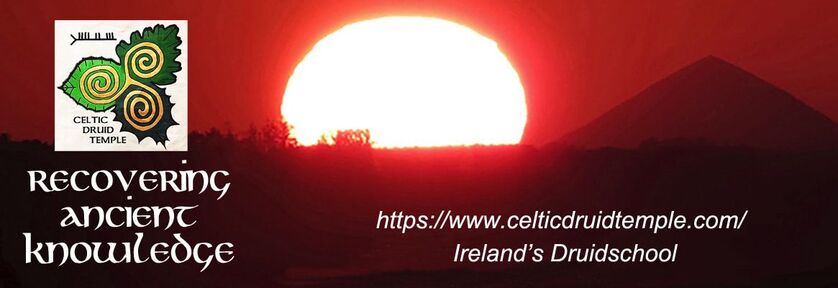






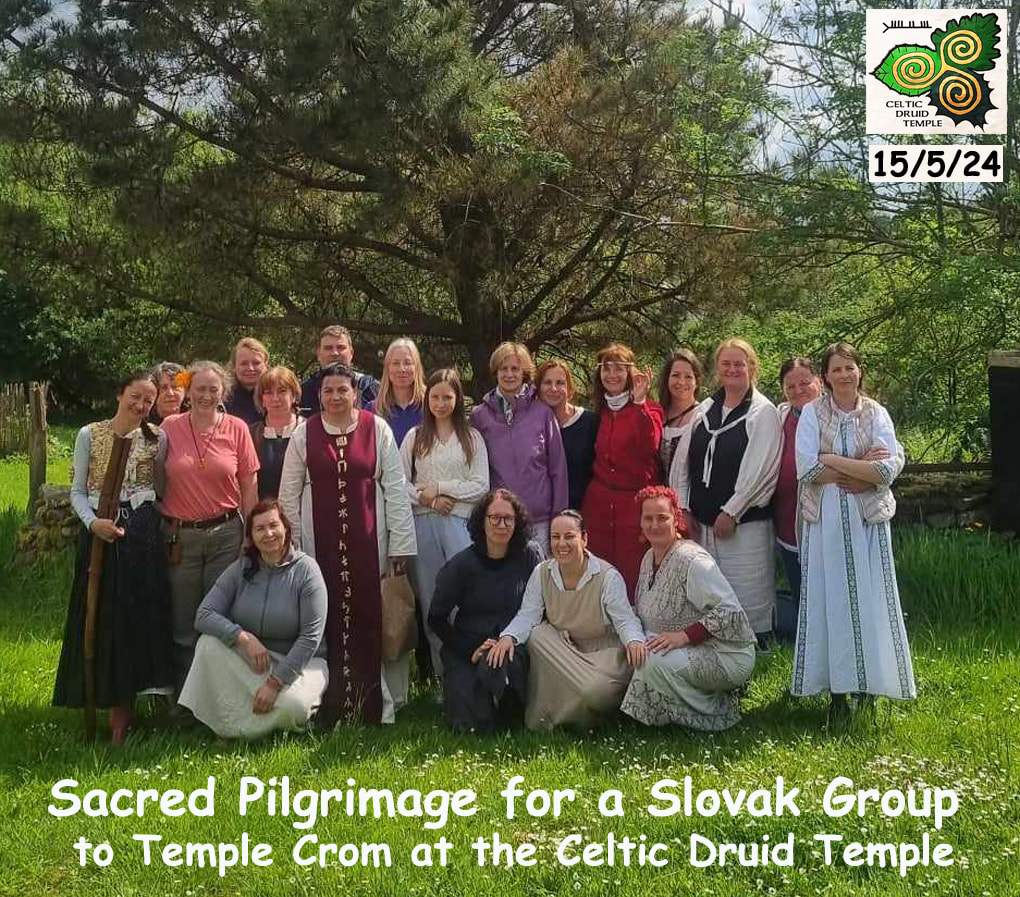
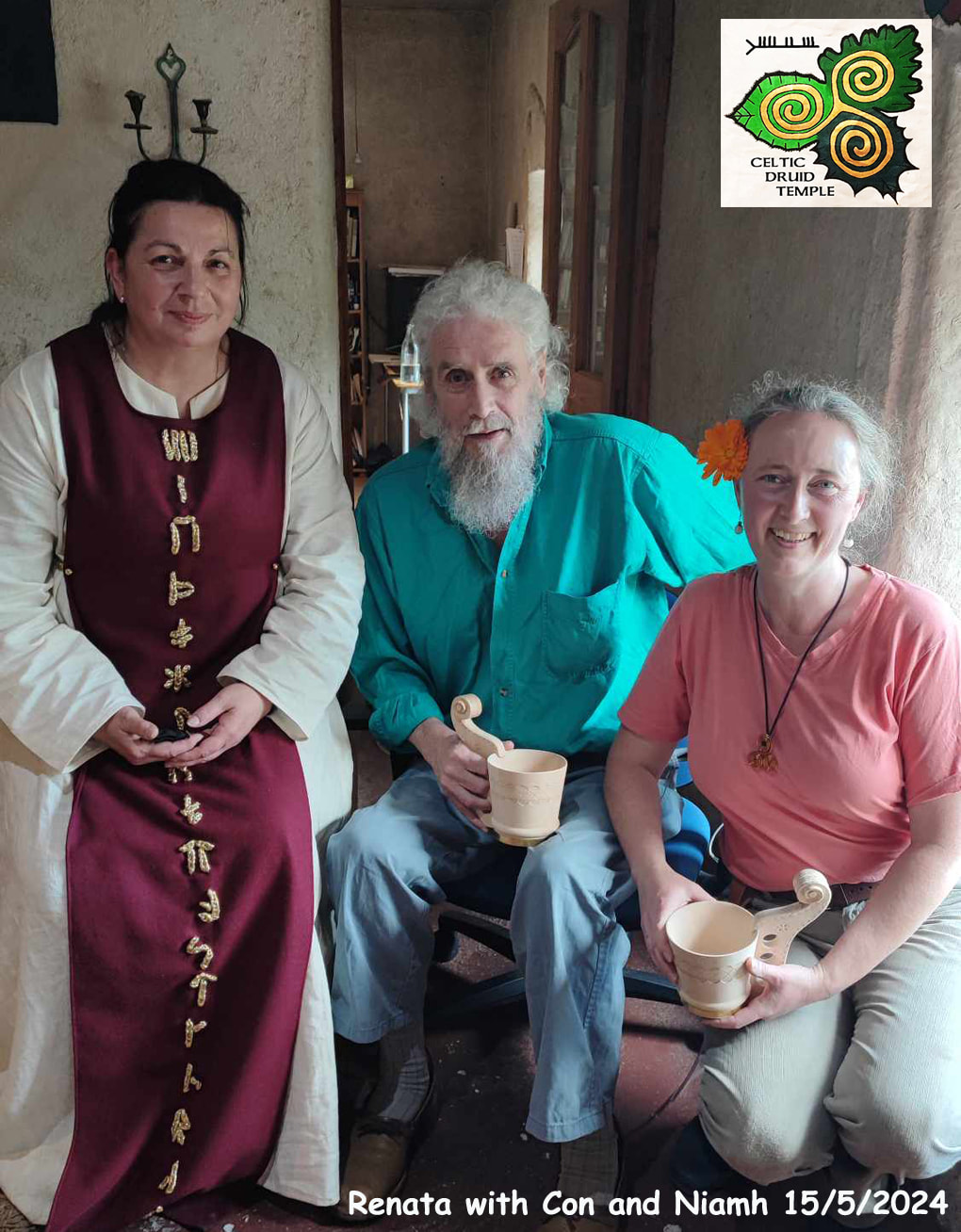
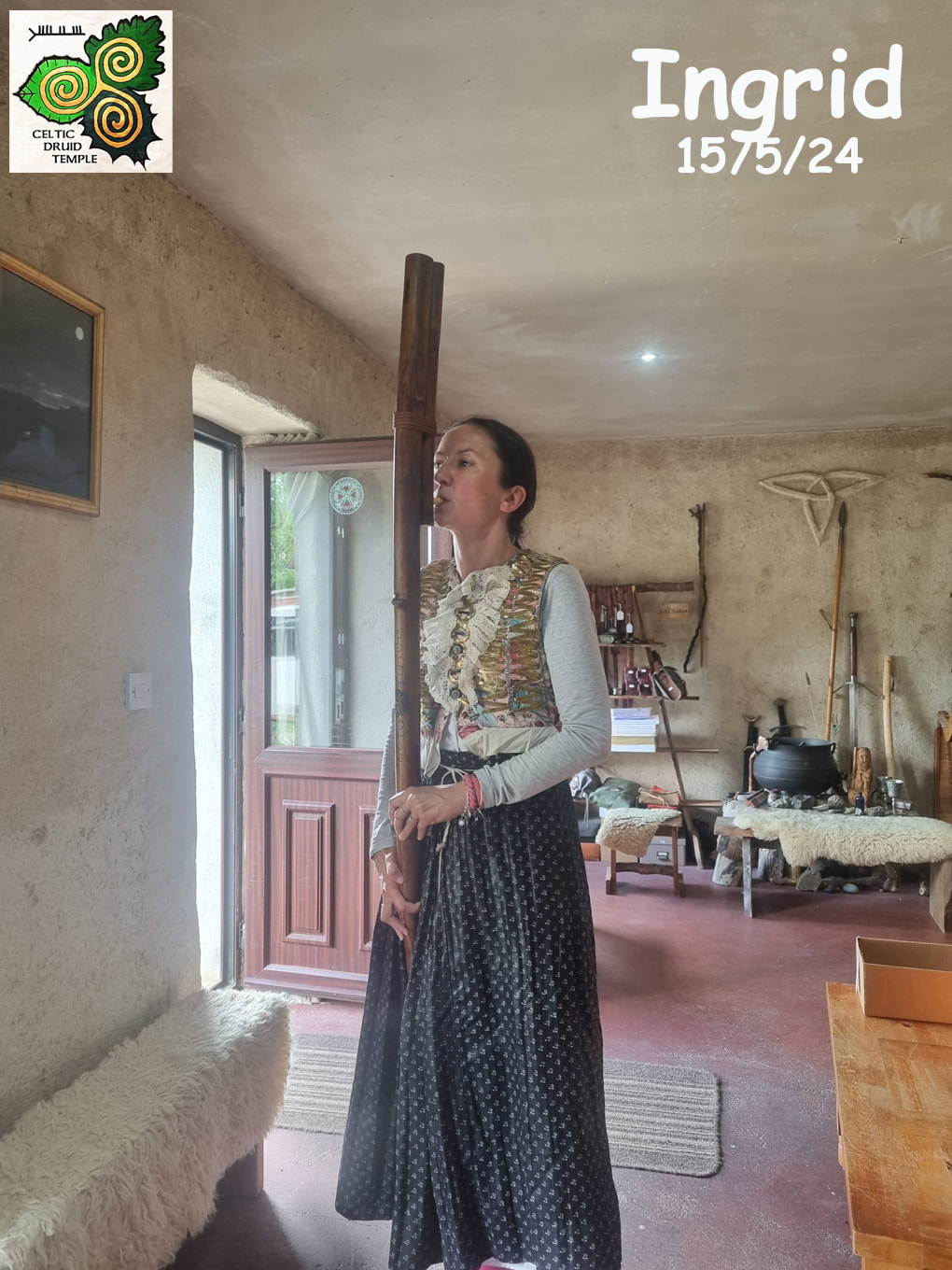
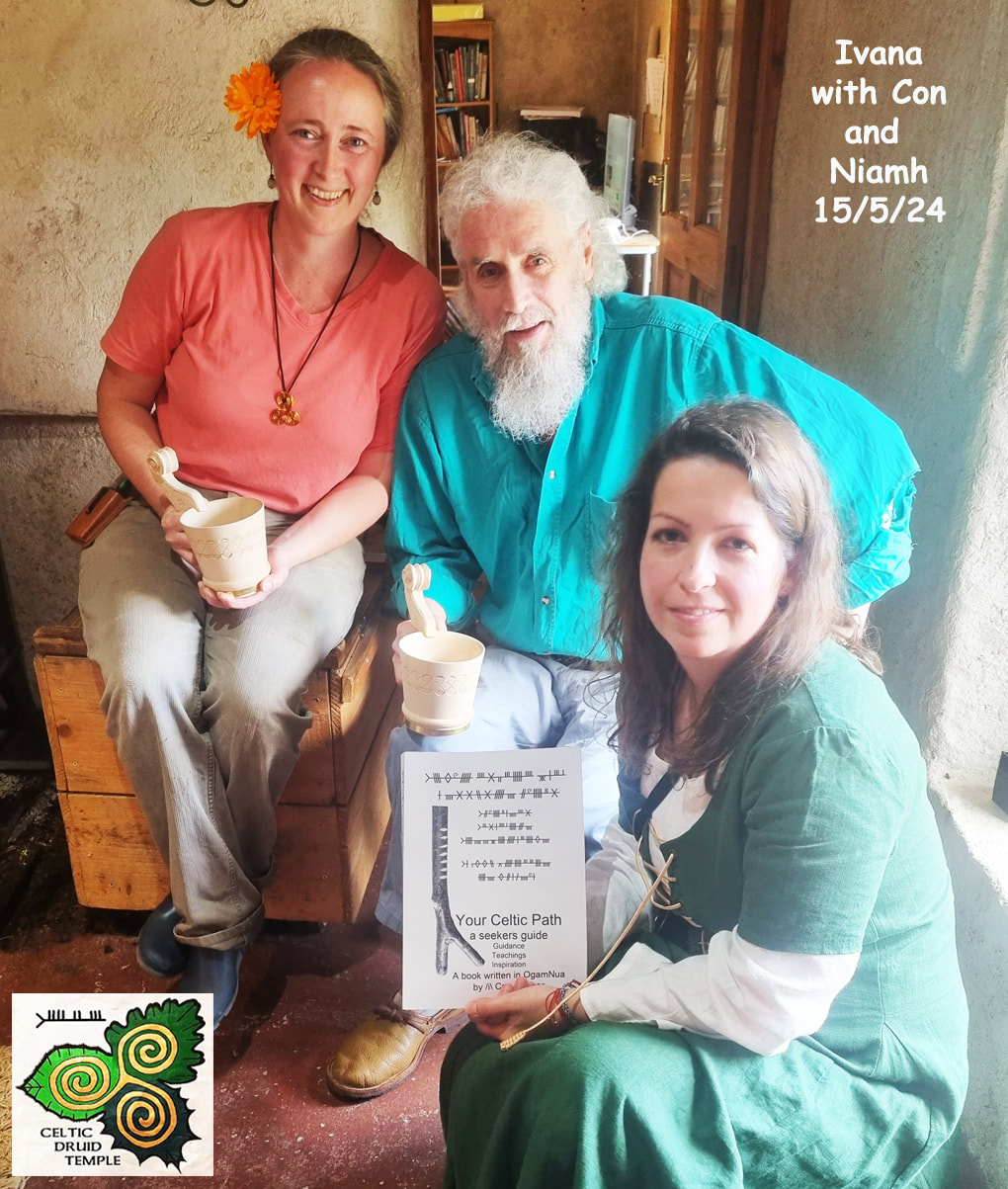
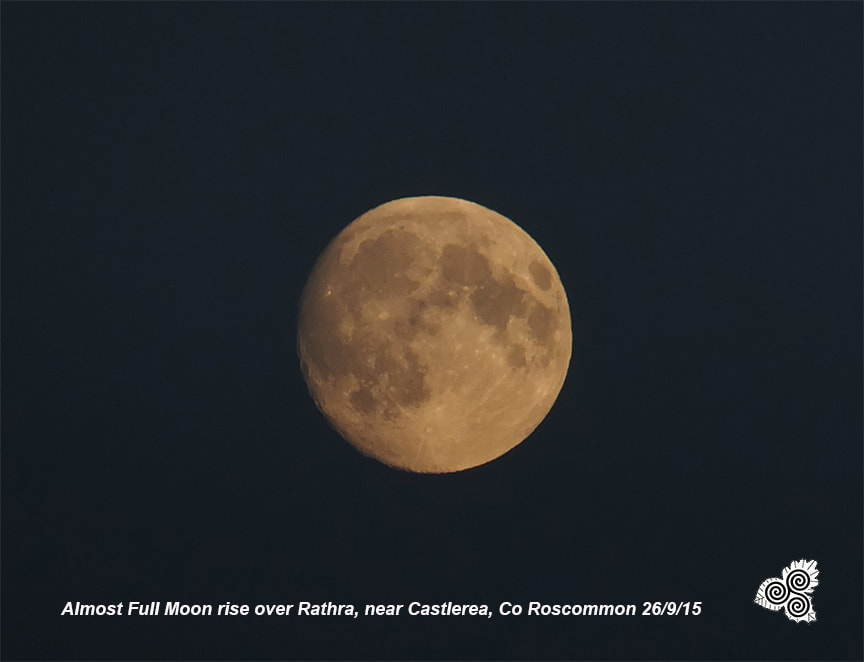
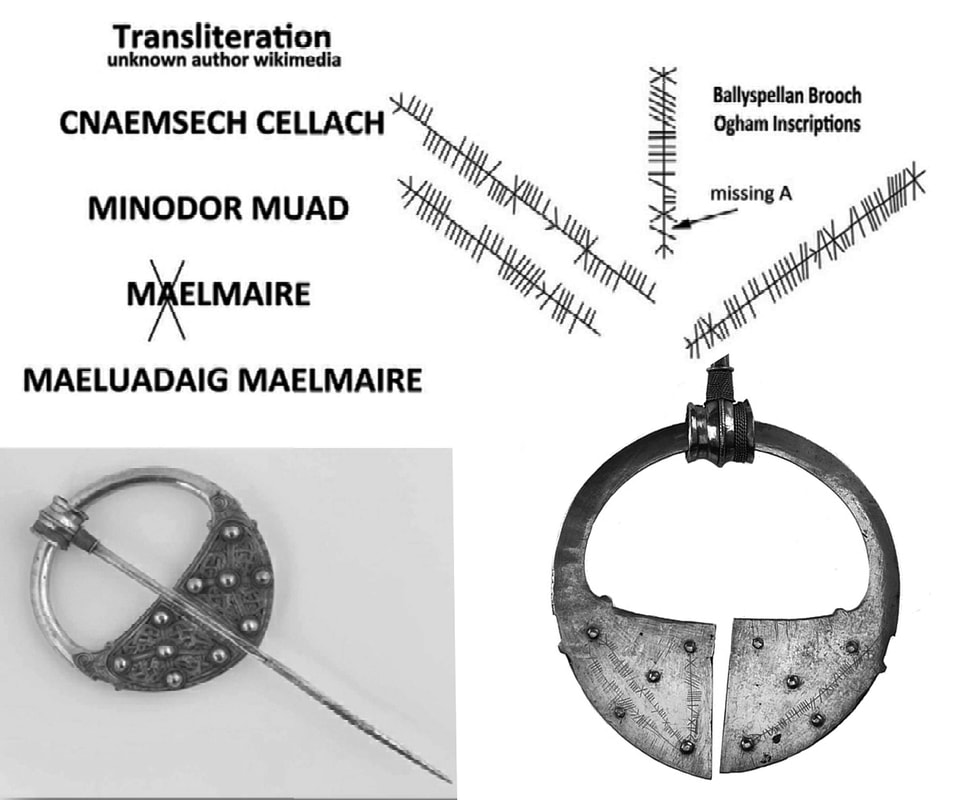
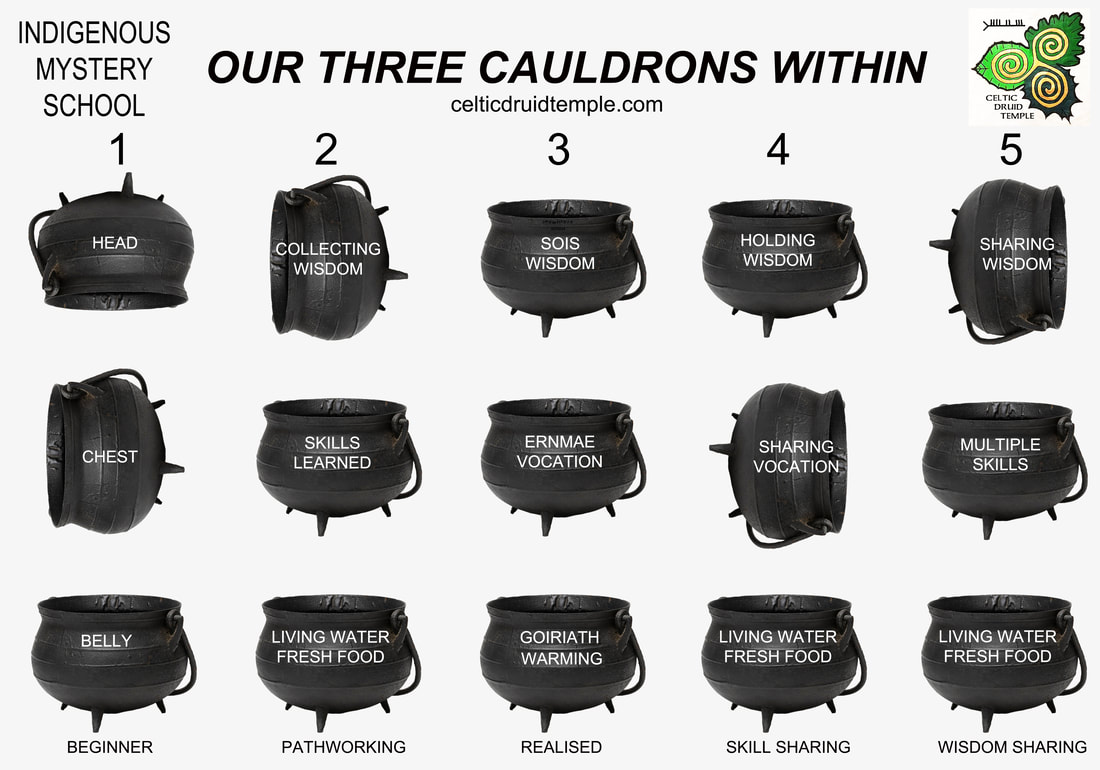
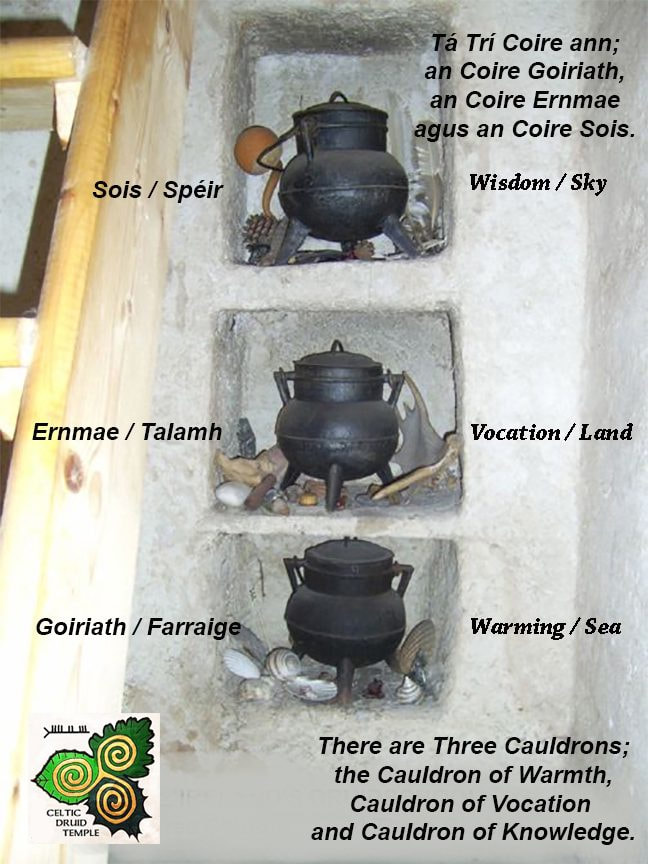
 RSS Feed
RSS Feed